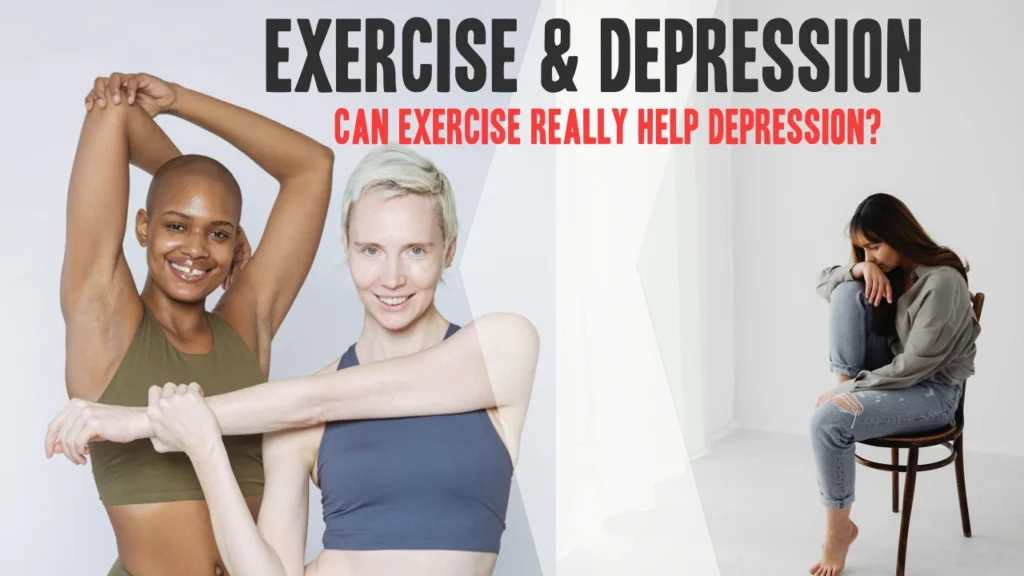Depression is one of the most common challenges for mental health worldwide and affects more than 280 million people worldwide (World Health Organization (WHO), 2023). The symptoms range from persistent sadness and fatigue to the impairment of concentration, loss of motivation and in severe cases suicidal thoughts.
Traditional treatments such as Antidepressants and psychotherapyremain crucial. However, growing scientific knowledge emphasizes another effective instrument: Exercise.
In the past two decades, hundreds of studies and systematic reviews have shown that physical activity can Reduce depressive symptoms, avoid (Cooney et al., 2023; Schuch et al., 2020).
In this article we will take one Deep immersion in the science of movement and depressionCover:
- Neurochemical changes and brain mechanisms
- Stress, inflammation and immune regulation
- Psychological and behavioral channels
- Evidence of clinical studies and meta -analyzes
- Practical recommendations for exercise types and duration
- Restrictions and considerations
1neurochemical changes: movement as a natural antidepressant
One of the strongest explanations for the antidepressant effects of movement is in Neurochemistry. Depression is often associated with it Defects in neurotransmitter Like serotonin and dopamine as well as impaired neuronal plasticity. Exercise dirty this.
1. Endorphine
Exercise solves the release of Endorphinssometimes referred to as “natural painkillers of the body”. These peptides not only reduce physical symptoms, but also induce feelings of euphoria that are often referred to as the “Runner’s High.”
2. Serotonin and dopamine
Physical activity increases Serotonin Synthesis and turnover in the brain. Serotonin is of crucial importance for the mood regulation and the main goal of SSRIS (selective serotonin reuptake inhibitor), one of the most frequently prescribed antidepressants.
Similar, Dopamine Way– Associated with motivation and pleasure – are improved by movement. This is particularly important because dopamine dysfunction is strongly connected to anhedony (loss of pleasure), a core symptom of depression.
3. The neurotrophic factor (BDNF) from the brain
The most fascinating finding is the effects of the movement on the effects of the movement BDNFA protein that promotes neural growth and plasticity. Patients with depression often have Reduced BDNF valuesWhich leads to an impairment of brain connectivity, especially in the hippocampus and in the prefrontal cortex (Zhang et al., 2022).
- Aerobics and resistance exercises both Increase BDNF.
- A single struggle with moderate training can temporarily increase the BDNF values Long -term training induces persistent increases.
This indicates that training not only changes the functioning of the brain – it changes its structure and resistance.

Stress, cortisol and inflammation
Depression is not just a brain disorder – it is a Full body stateCombined with chronic stress and systemic inflammation.
1. Cortisol regulation
Cortisol, the primary stress hormone, is often increased in depression. High cortisol damages the hippocampus, disturbs the memory and worsens the mood. Movement helps with the regulation of cortisol:
- Reduction of the basic line values over time
- Improving the body’s resistance to stressors
- Improvement of parasympathetic (calming) nervous system activity
2. Inflammation and immune function
Numerous studies have shown that people with depression often have Increased inflammatory markersLike C-reactive protein (CRP) and interleukin-6 (IL-6). Chronic inflammation can affect neurotransmitter function and worsen depressive symptoms.
Exercise acts as one Anti-inflammatory interventionReduction of CRP, IL-6 and TNF-α (tumor necrosis factor alpha). This double effect – reducing stress hormones and inflammation – can be one of the strongest biological reasons why movement improves mood (Schuch et al., 2020).
Psychological and behavioral channels
In addition to biology, movement fights depression through psychological and life -related changes.
1. Behavior activation
One of the most effective therapies for depression is Behavioral activation– Relief of individuals to carry out structured activities despite low motivation. Movement is a natural form of this therapy. Also offer small workouts:
- A feeling of performance
- Disorder of the negative thoughts cycles
- Increased daily structure and routine
2. Sleeping improved
Sleep disorders are both one Cause and symptom of depression. Regular exercise:
- Increases the slow (deep) sleep
- Improves the insert and efficiency of sleep
- Regulates Zirkadiane rhythms
This creates a positive feedback loop: better sleep → improved mood → more energy for activity.
3. Self -efficacy and championship
Depression often undermines trust and self -esteem. Movement offers measurable progress – whether it lifts heavier weights, continues or simply takes a daily walk. This Little victory Explure the self -efficacy that is a psychological buffer against depression.
Evidence of clinical studies
The claim that “movement helps depression” is not only anecdotic – it supports it from Big clinical studies.
1. Randomized controlled studies
- Blumenthal et al. (2007): Compared to Aerobic Training, Sertralin (an SSRI) and a combination of both adults with severe depression. The results showed that movement was As effective as medication After 16 weeks.
- Dunn et al. (2005): Found a clear one Dose-effect relationship– A high amounts led to a stronger reduction in depressive symptoms.
2. Meta -analyzes
- Cochrane Review (Cooney et al., 2023): Analyzed 39 studies with over 2,000 participants. To the conclusion that exercise a Medium -heavy to great effect When reducing depression.
- Jama-Psychiatrie meta-analysis (Schuch et al., 2020): Confirmed that physical activity reduces the risk of depression and treats existing cases regardless of age or gender.
How much and what kind of practice?
1. Duration and frequency
- 150 minutes a week The evidence -based guideline is of moderate intensity exercises (e.g. going to go).
- Advantages can be with little like 30 minutes, three times a week.
- Even 10–15 minutes a day Offers measurable mood improvements.
2. Aerobic VS resistance training
- Aerobic exercise (Running, swimming, cycling) shows a strong impact on the mood and the reduction in stress.
- Resistance training (Weightlifting, Body weight exercises) also improves depression, especially self -esteem and cognitive function.
- Combination programs can offer the best total advantages.
3. Group against individual exercise
- Group exercise adds social supportReduce isolation.
- Individual movement helps build Independence and flexibility.
- Both are effective and the choice depends on personal preferences.
Restrictions and considerations
While movement is powerful, it is No remedy. Important considerations are:
- Severe of depression: In severe cases, motivation can be too low to initiate exercise without professional support.
- accessibility: Not all people have safe spaces, resources or physical health to do energetic activities.
- Compliance: Visitus rates can be high without structured programs or instructions.
Therefore, many researchers recommend Movement as an additional therapyNot the sole replacement for medication or psychotherapy, especially with moderate to severe depression.
Diploma
The evidence is clear and convincing: Movement is an effective, scientifically validated instrument against depression. From:
- Increase from serotonin, dopamine and BDNF
- Reduction of cortisol and inflammation
- Improvement of sleep, trust and daily structure
… Movement offers both biological and psychological resistance.
In all cases, it cannot replace traditional treatments, but as a Inexpensive, accessible, side -effective interventionPhysical activity should be considered as First line strategy in mental health care.
Take practical things: Even Walking, cycling or resistance training on most days for 20-30 minutes can significantly improve the mood and reduce depressive symptoms.
References
- Blumenthal, yes, Babyak, Ma, Moore, Ka, Craighead, WE, Herman, S., Khatri, P., … Krishnan, Kr (2007). Effects of training training on older patients with severe depression. Archives of Inner Medicine, 167 (8), 797–804.
- Cooney, G., Dwan, K., Greig, C., Lawlor, D., Rimer, J., Waugh, F., … Mead, G. (2023). Exercise for depression. Cochrane database with systematic reviews, (1), CD004366.
- Dunn, Al, Trivedi, MH, Kampert, JB, Clark, CG & Chambliss, HO (2005). Exercise treatment for depression: effectiveness and dose reaction. American Journal of Pruventive Medicine, 28 (1), 1–8. https://doi.org/10.1016/J.amepre.2004.09.003
- Schuch, FB, Vanc steam, D., Firth, J., Rosenbaum, S., Ward, PB, Silva, Es,… Stubbs, B. (2020). In the meantime, physical activity and depression: a meta -analysis of prospectious cohort studies. Jama Psychiatry, 77 (4), 361–369.
- World Health Organization (WHO). (2023). Depression. https://www.who.int/news-grooom/factsarets/detail/depression
- Y. Zhang, L. Liu, Y. Peng & K. Wu (2022). Movement and neurotropher factor from brain: effects on depression. Borders in psychiatry, 13, 821228.





